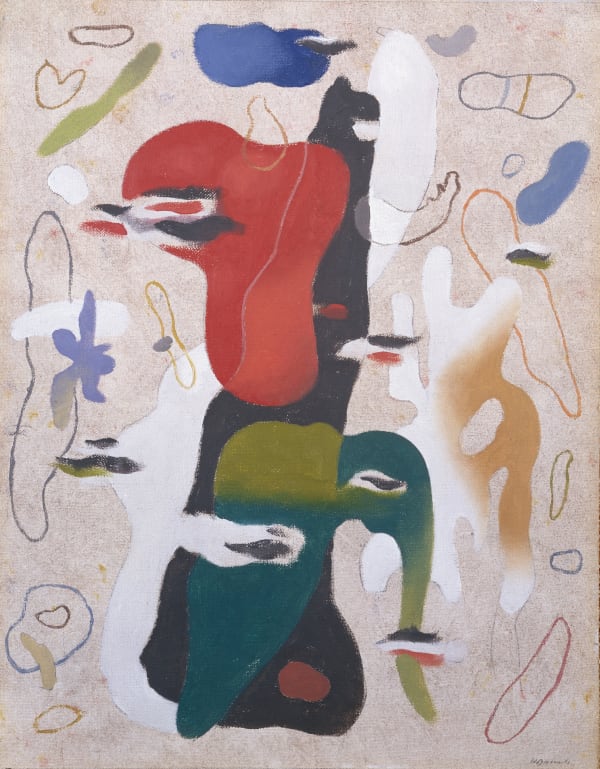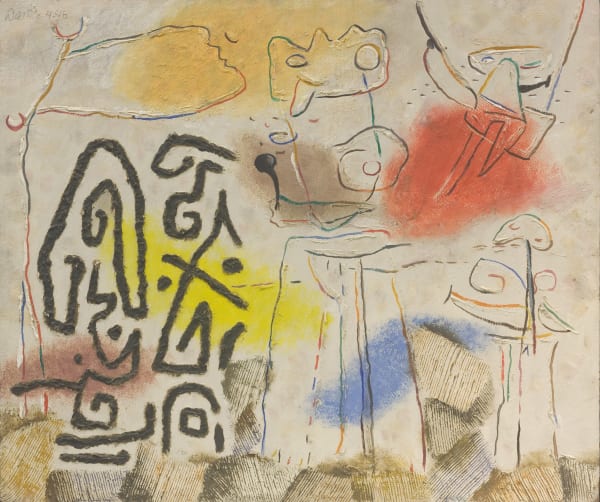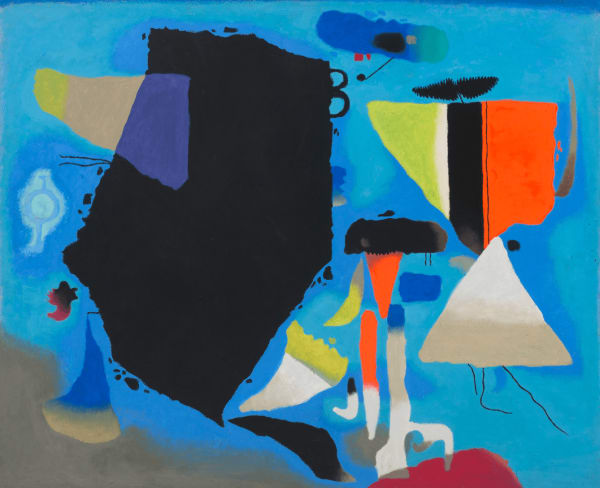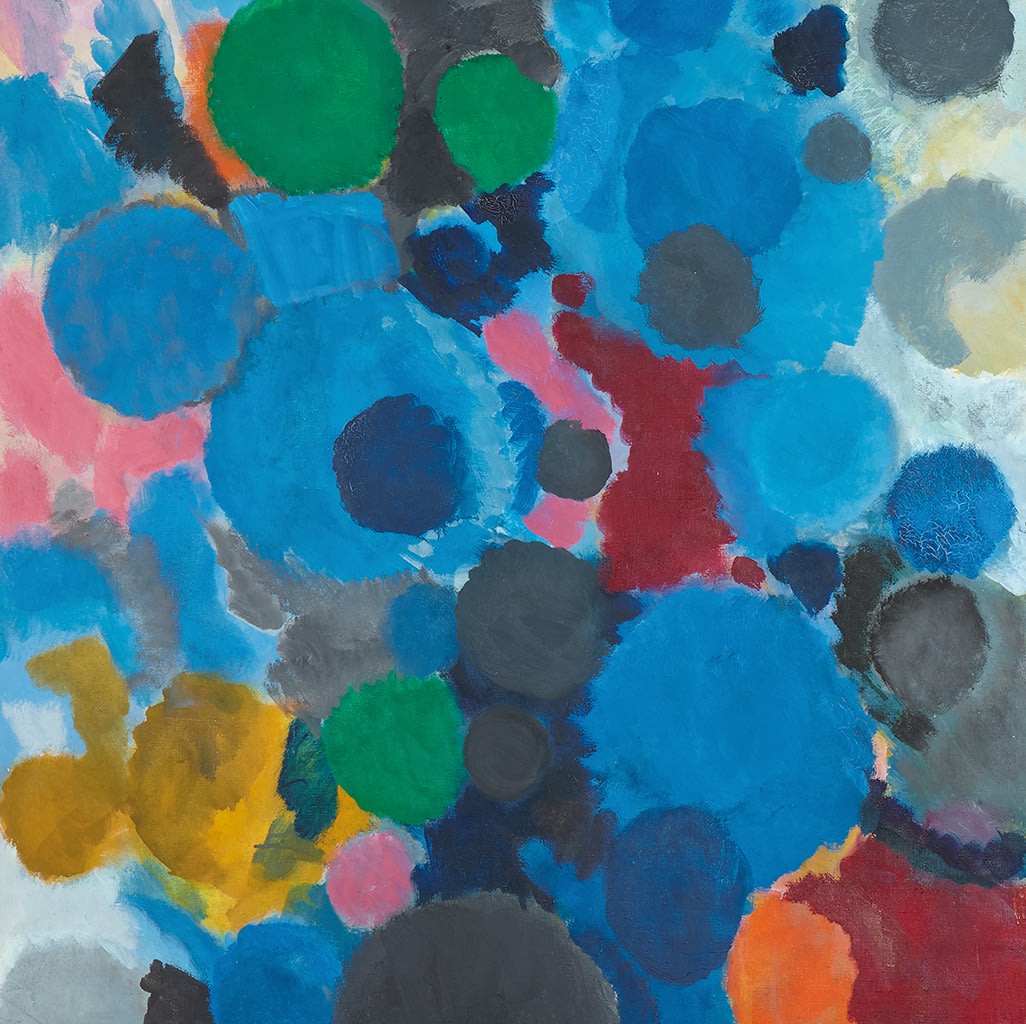WILLI BAUMEISTER German, 1889-1955
"The work of art creates a cosmos that asserts itself in a way that is side by side with the nature."
Willi Baumeister was a German painter whose work used free-floating forms and lines to create playful abstractions. Reminiscent of the works of Paul Klee, Fernand Léger, and Joan Miró, Baumeister forged a lexicon of marks and shapes that was wholly his own. “The mysterious power of a work of art lies in its formal-abstract component,” he once explained, “and in the relation of the representational to its artistic deformation. In all eras, art proceeded and gave the canon the purified view for the eye of humanity.” Born on January 22, 1889 in Stuttgart, Germany to a family of craftsman, he went on to study at the Stuttgart Art Academy where he met the painter Oskar Schlemmer. Later, banned from exhibiting his work as a "degenerate" artist during the Third Reich, he continued to show in other cities across the globe. During World War II, Baumeister studied prehistoric and Asian art, gleaning ideas and themes which he used in his later works. Today, his art can be found in the collections of the Art Institute of Chicago, the Museum of Modern Art in New York, the Tate Gallery in London, and the National Gallery of Art in Washington, D.C. On August 31, 1955, Baumeister died while working at his easel in Stuttgart, Germany.
-
 WILLI BAUMEISTERFlämmchen I, 1931Oil on canvas44,5 x 34,5 cm
WILLI BAUMEISTERFlämmchen I, 1931Oil on canvas44,5 x 34,5 cm -
 WILLI BAUMEISTEREidos mit zwei Figuren, 1940Oil on canvas100 x 81 cm
WILLI BAUMEISTEREidos mit zwei Figuren, 1940Oil on canvas100 x 81 cm -
 WILLI BAUMEISTERBild mit farbigen Zonen, 1946Oil and plaster on cardboard45 x 53,5 cm
WILLI BAUMEISTERBild mit farbigen Zonen, 1946Oil and plaster on cardboard45 x 53,5 cm
17 3/4 x 20 7/8 in -
 WILLI BAUMEISTERKessaua mit Doppelring, 1954Oil with synthetic resin on hardboard81 x 100 cm
WILLI BAUMEISTERKessaua mit Doppelring, 1954Oil with synthetic resin on hardboard81 x 100 cm
31 7/8 x 39 3/8 in





